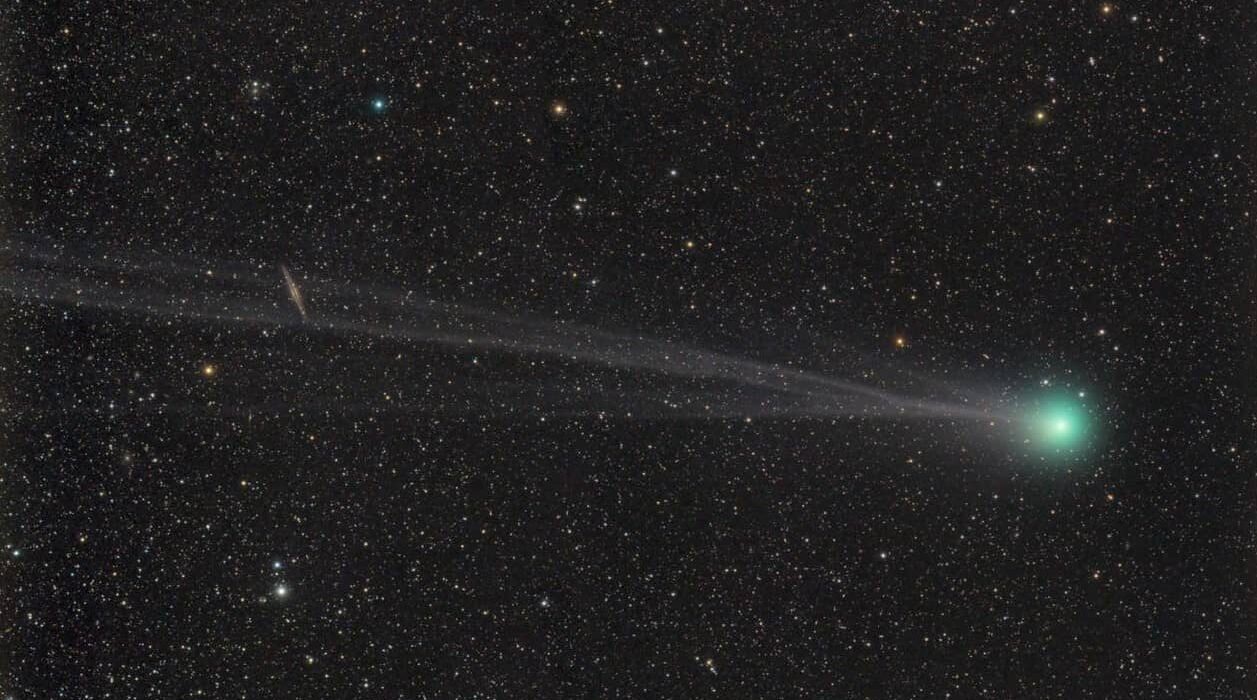A team of chemists has unraveled the long-standing mystery behind the green glow of comets’ heads, providing crucial insights into the celestial phenomenon that has puzzled researchers for decades. The key to this revelation lies in the examination of an elusive molecule, dicarbon, which exists fleetingly on Earth but plays a vital role in cometary illumination.
Comets, those speedy remnants from the solar system’s early days, occasionally grace Earth with their presence, leaving behind a trail of questions. The origins of the green glow surrounding comets’ heads, as opposed to their tails, have long intrigued scientists. The journey to understanding this cosmic spectacle led researchers to the enigmatic molecule dicarbon. Dicarbon, composed of two bonded carbon atoms, was first theorized by Gerhard Herzberg in the 1930s as a potential contributor to the green comet glow. The recent study, published in the Proceedings of the National Academy of Sciences, put Herzberg’s theory to the test and confirmed its accuracy, albeit with some nuanced details.
Tim Schmidt, a chemist overseeing the study at the University of New South Wales in Sydney, Australia, explained that dicarbon’s reactivity posed a challenge. The team had to simulate the near-Earth space environment using vacuum chambers and ultraviolet lasers to precisely examine how dicarbon breaks apart when exposed to powerful ultraviolet rays.
The molecule, abundantly present in space within stars, nebulae, and comets, quickly reacts with oxygen in Earth’s atmosphere, making it challenging to study. The study marked the first time scientists observed the molecule’s behavior when subjected to ultraviolet rays.
The team’s findings affirmed that comets’ green light originates from dicarbon molecules. As these molecules, formed when sunlight heats cometary ice, absorb and emit visible light, they contribute to the captivating green glow. The findings offer rigorous insights into the molecule’s behavior, aiding astronomers in modeling cometary behavior and understanding their composition.





